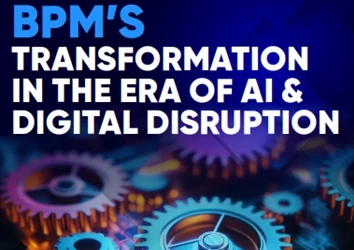How BPM enhances Agile, Lean and Six Sigma
BPM can improve Agile, Lean and Six Sigma efforts in several ways
Add bookmark
Business process management (BPM) is a structured approach to improving organizational processes. An expansive discipline, it applies various methods to analyze, model, change and monitor processes.
More than a quarter (27 percent) of surveyed companies currently use BPM to support operational excellence (OPEX) and transformation strategies, according to the PEX Report 2024/25. What’s more, 22 percent plan to increase investment in BPM over the next 12 months.
A fundamental aim of BPM is to help a business continuously improve its ability to drive desired outcomes and results. It shares this continuous improvement quality with three common methodologies/values of process excellence: Agile, Lean and Six Sigma.
David Palmieri is a global transformation and innovation expert specializing in process reengineering leveraging Agile, Lean and Six Sigma. He considers BPM distinctively suited to augmenting the application of these methods in the business setting.
Ahead of his attendance as an honored guest at an upcoming All Access: BPM 2024 breakout room session on the topic of mastering core process skills, PEX Network spoke with Palmieri to learn more about his take on the role BPM plays in Agile, Lean and Six Sigma execution.
Join the PEX Network community

Don't miss any news, updates or insider tips from PEX Network by getting them delivered to your inbox. Sign up to our newsletter and join our community of experts.
Learn MorePEX Network: How can BPM enhance the application of Agile, Lean and Six Sigma?
 David Palmieri: BPM is uniquely positioned to both support and improve the implementation of these methodologies and values in various ways. It increases process performance insights through an ability to gather data in a standardized and repeatable manner. This can help make processes more efficient and reduce lead times (Lean) as well as cut down on defects (Six Sigma).
David Palmieri: BPM is uniquely positioned to both support and improve the implementation of these methodologies and values in various ways. It increases process performance insights through an ability to gather data in a standardized and repeatable manner. This can help make processes more efficient and reduce lead times (Lean) as well as cut down on defects (Six Sigma).
It also allows greater process automation to the extent the BPM tools/platform are integrated end-to-end. This takes the brainpower away from the routine, manual aspects of process completion (e.g. writing code, booking entries, updating data fields, etc.) and toward activities that require creativity, problem solving and innovation in the adoption of change, key elements of Agile.
PEX Network: What factors are key to successfully applying BPM methods to support these methodologies?
DP: An agreed methodology for managing change is highly important. An example would be ADKAR – an acronym for Awareness, Desire, Knowledge, Ability, Reinforcement. Effectively, this means the people affected by change are part of, and in fact a partner, in crafting major elements of the change. It means that change it not done ‘to’ them, but with them and for them.
Executive sponsorship that is visibly active and engaged throughout the change management process, is crucial too, as is a willingness to move fast even if it means making mistakes. Course correcting and ‘failing fast’ should be embraced; waiting for perfection is a recipe for failure.
PEX Network: What are the biggest challenges businesses can expect to encounter?
DP: Challenges can vary from one organization to another, but there are three common hurdles that often cause issues. First is going too slow with budgets shifting due to competing priorities. This can be addressed by securing strong sponsorship that co-owns the outcomes. This could be one executive or a steering committee that shares ‘skin in the game’ for validating and sustaining the results. Agreed upon targets, often in the form of metrics, are always front and center alongside risks/issue mitigation.
Second is people not accepting change because they did not/do not have a hand in steering it. To avoid this issue, establish working groups in middle- and line management. These groups dedicate their time and people to shaping the changes, communications plan and training wherever it’s required. Often these groups and their staff have the goals of the change initiative embedded in their annual objectives to ensure a dominant focus.
Third is setting unclear and/or unmeasurable expectations, because everyone needs to agree on what the desired end goal is. Celebrating success at all levels of the organization goes a long way in helping to limit this problem. This could be a small but important milestone, positive feedback from clients, external awards, training/certifications and metric targets attained. Tailoring the recognition to the individuals most closely associated with the results is important.
All Access: Future of BPM 2026

You asked, and we listened. Business process management (BPM) remains the cornerstone technology for driving organizational transformation, according to the survey results featured in the latest PEX Report. As we look toward 2026 and beyond, generative AI, agentic AI, and intelligent process orchestration are redefining how processes are designed, executed, and optimized. BPM is your key to adapting swiftly and effectively in this new era.
PEX Network is bringing together industry leaders, technology innovators, and thought leaders to answer your biggest questions and explore the advancements reshaping business today. And you're invited. Register for free to save your spot now!
Register Now






















